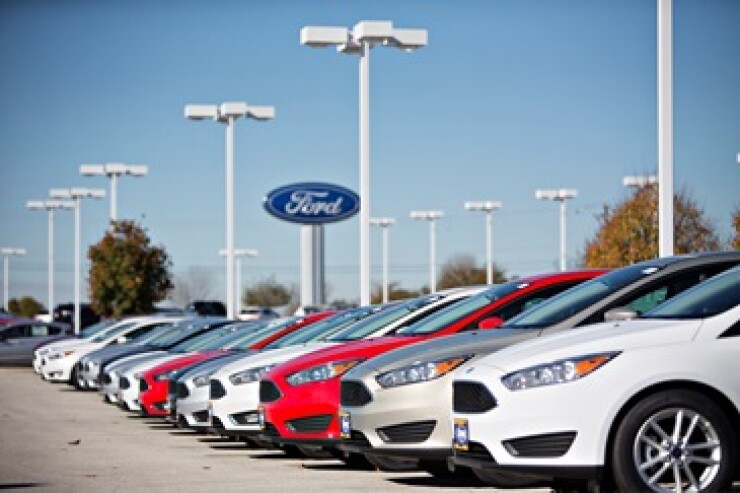
Until last week, bonds backed by auto loans were coming to market at a slower pace than they did in 2015. But after Labor Day, the market went into overdrive: nine adeals totaling $7.1-$7.4 billion (including a potential upsizing) hit the market, according to regulatory filings and ratings agency presale reports published this week.
If the pace keeps up, 2016 will be a boom year.
The most recent transactions, according to presale reports issued Thursday, included Hyundai Auto Receivables Trust 2016-B totaling $1.01 billion; GM Financial Automobile Leasing Trust 2016-3 for $1 billion; and Nissan Auto Lease Trust 2016-B that is to be either $850 million in lease-backed bonds or potentially upsized to $1.14 billion.
By comparison, there were only two securitizations in August –
In its second-quarter sector update for auto securitizations released in mid-August, Moody’s Investors Service noted that auto loan, lease and floorplan deals had tallied only $48 billion through June, compared with $56 billion for the same period of 2015. At that time, Moody’s was forecasting a 15-20% decline year-over-year for the sector, despite the fact average seasonally adjust annual new-car sales rates jumped from 16 million to 17.5 million in 2015 to pump additional seasoned loans into the 2016 prime ABS pipeline.
Increased funding costs and “regulatory scrutiny” – such as the Consumer Financial Protection Bureau’s focus on subprime lending – “will continue to discourage sponsors from issuing securitizations and will limit the number of new entrants to the securitization market in 2016,” the report stated.
But by the final days of August, issuers including
In addition to Nissan and GM, First Investors Auto Owners Trust 2016-2 ($230 million) and Ally’s Capital Auto Receivables Trust 2016-3 ($750 million) also were introduced to the market this week, along with USAA Auto Trust’s first deal of the year comprised of $500 million of mostly senior notes backed by new and used prime auto loans originated for its military members and their families.
SEC filings showed forthcoming deals include a $150.4 million United Auto Credit Securitization Trust 2016-2; Hyundai Auto Receivables Trust 2016-B totaling $1.01 billion in notes; and TCF Auto Receivables Owner Trust 2016-1 with $501.62 million in notes.
S&P on Wednesday confirmed to Asset Securitization Report that its updated forecast on auto ABS activity put the sector on a trajectory to issue $105 billion worth of securitizations by year’s end – up from $98 billion in 2015, a 7.1% gain.
The transactions, which are being pulled together just prior to the mid-September ABS East industry confab, reverse what had had been slow auto ABS issuance levels earlier this summer in comparison to 2015. Standard & Poor’s, for instance, reported $65 billion in auto loan/lease/floorplan securitizations through the end of August, trailing the $75 billion pace set through August 2015.
Besides concerns over market and regulatory conditions, Moody’s and other agencies have noted concern over the collateral pools’ credit quality in both prime and subprime collateralizations. In the subprime sector, according to DBRS, the percentage of borrowers with average FICO credit scores (600-659) have increased to peak levels of 59.2% of subprime pools, compared to just 45% in 2005.
Fitch Ratings, which tracks $93.5 billion in outstanding auto ABS prime and subprime collateral, noted in an Aug. 25 report an increase in annualized losses and delinquencies due to the slow summer months. But “the pace of losses is likely to increase as the fall approaches,” as serious delinquencies in the subprime area (60-plus days late) rose 13% month-over-month in July to 4.59%, 17% higher than the same period in 2015.
S&P reported on Wednesday that net losses in prime ABS pools increased to 0.61% in July – up from 0.46% in June and 0.42% in July 2015. For subprime, losses spiked to their highest level in six months to 7.51%, compared to 6.12% in June and 5.99% the year prior.





